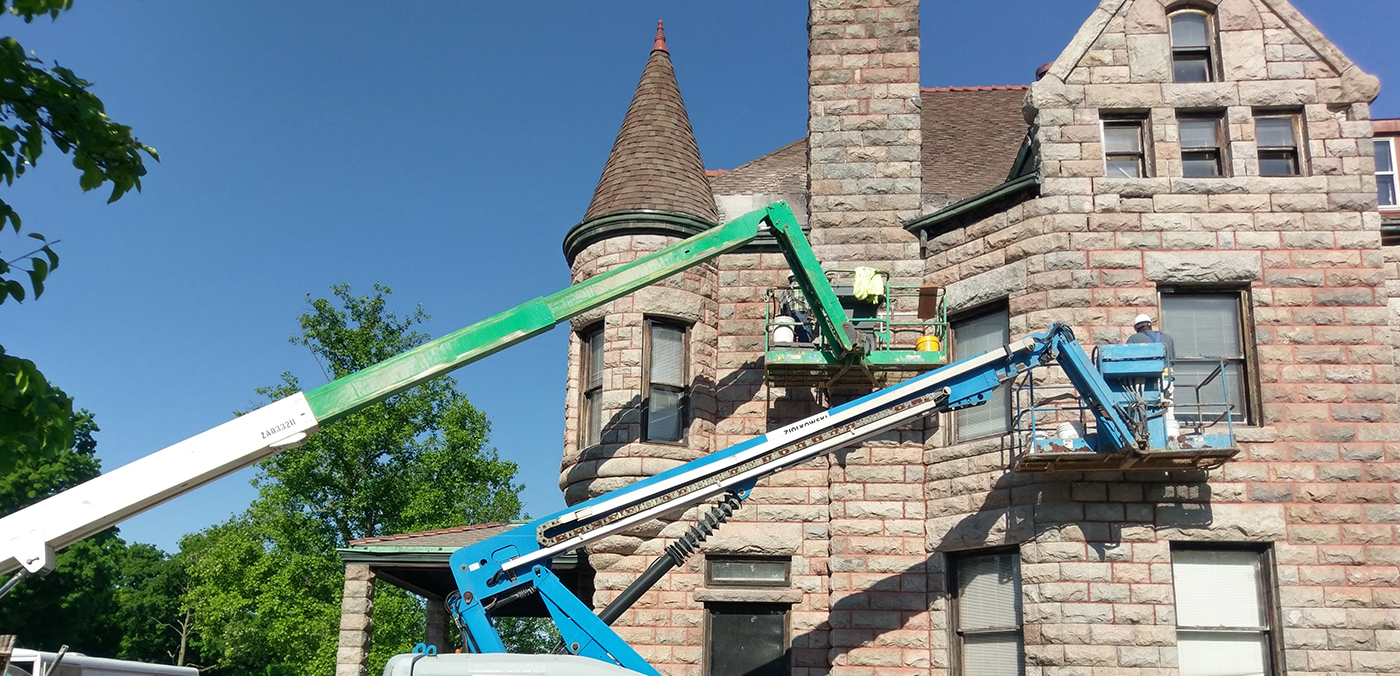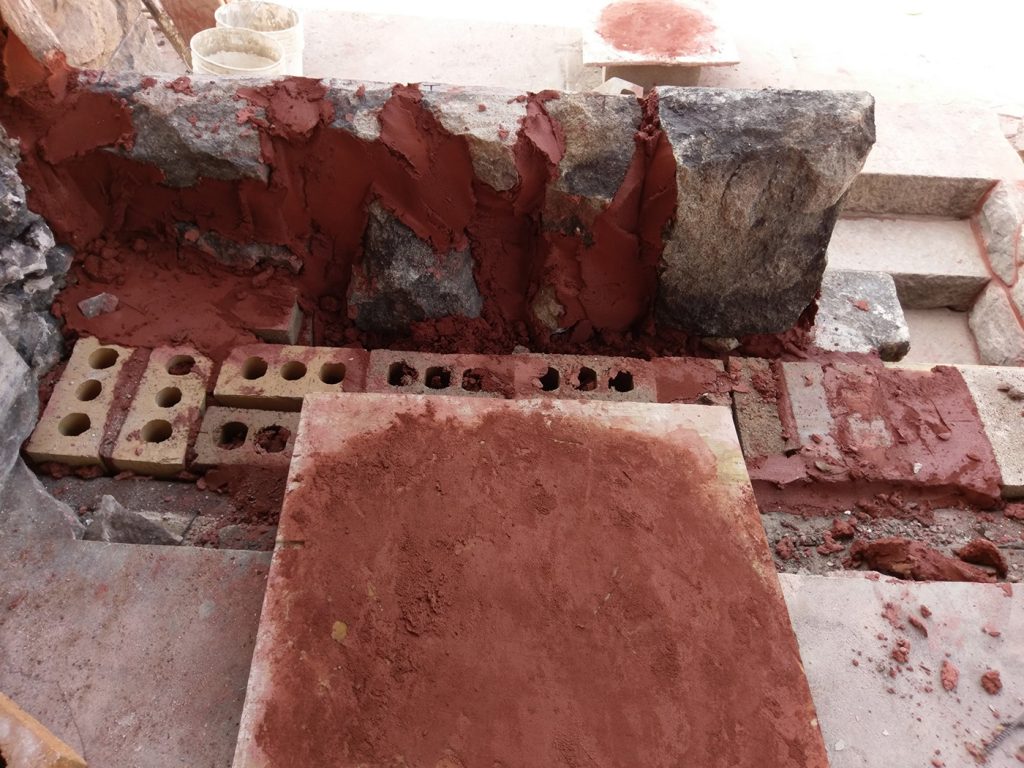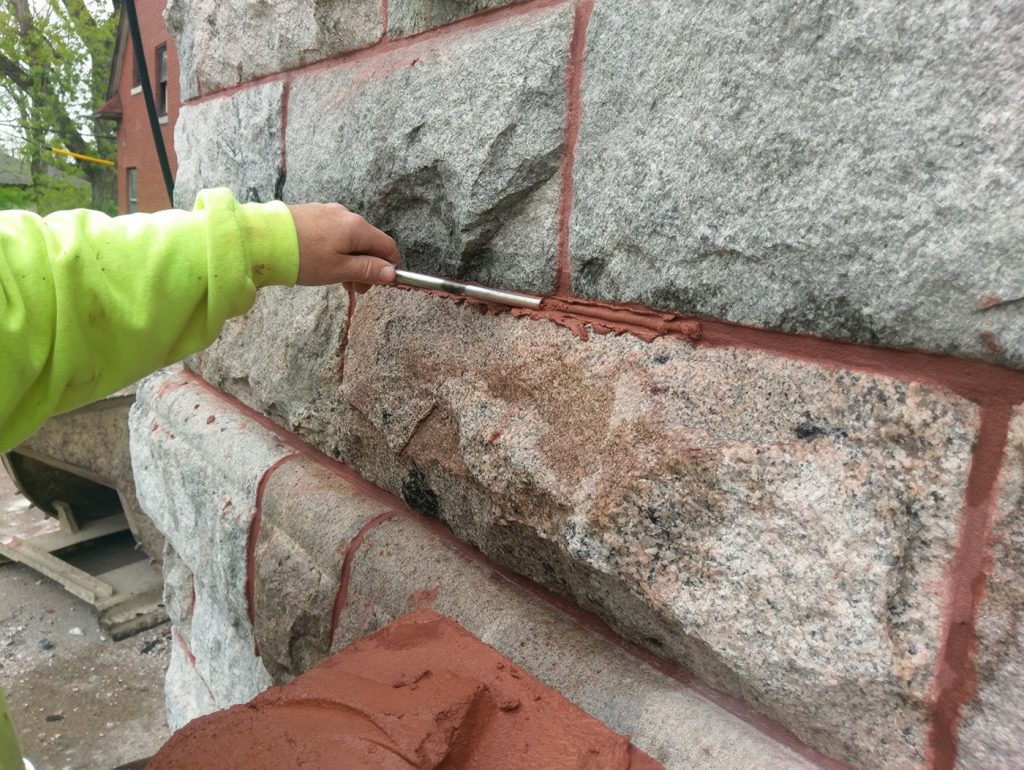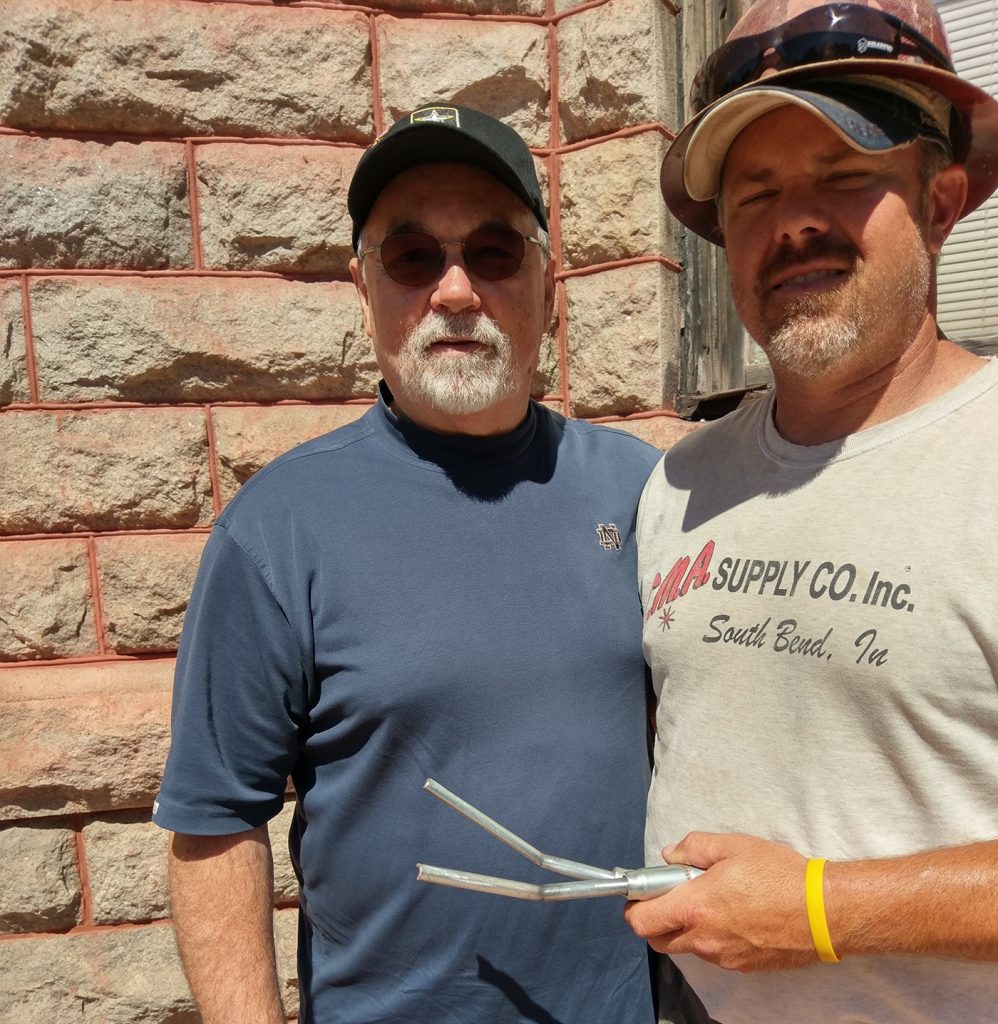NEWS
Details Matter in Kizer House Restoration
South Bend’s Kizer House is an impressive pile of Victorian architecture often likened to a castle. But zero in on that stately granite facade and you’ll find that subtle details can make a big difference.

Ingenuity Solves a Problem
It may take a village to raise a child, but to save the Kizer House in South Bend it takes an army. The regiment includes donors to help pay for the work, architects and engineers to help with planning and cranes, plus lifts and scaffolds to elevate contractors to dizzying heights. Equally important, though sometimes overlooked, are the skilled tradespeople who creatively solve problems to do a restoration right.
When we started work at the Kizer House, we discovered that the home’s stately granite walls hid a variety of ills. From a distance, they looked sturdy, but the house’s porches, gables, and chimneys stood in place more by habit than mortar. Over the past couple of months, masons have worked to rebuild and recreate deteriorated elements, including decorative chimneys removed for safety a few years ago. Workers used granite from inside the walls to replace damaged and missing stones, and now the leaning gables and porches are square and true.
As the crew peels back layers, we’ve discovered unknown additions and alterations. The revelations are allowing contractors to reverse unsympathetic changes and restore lost elements. One exciting discovery – at least for restoration nerds like us — is the decorative bead or “grapevine” detail on the mortar joints between the stones (think of a grapevine winding its way up the wall). Lost over the years in the patchwork of repairs that peppered the exterior, the original dimensional mortar had become a dull and flat, if not entirely washed out.
To restore the original look, we found the answer inside the home — on what was once an exterior wall covered during an addition. There, a section of original mortar color and detailing provided the guide for restoration.
Turns out, finding that key section was the easy part. Matching it took six batches of sample mortar and multiple test installations to achieve the correct deep red color.

Our efforts to locate commercially manufactured tools to create the bead joint proved unsuccessful. In spite of dozens of attempts ordering through various mason supply houses, we couldn’t find a match. That’s when lead tuck-pointer Tony Bowen called in reinforcements – his father, Dan England.
A retired machinist for Bethlehem Steel, Dan volunteered to make the tools. Starting with a solid metal rod and re-purposed file handles, he crafted tools to match the different sized horizontal and vertical mortar joints. Tools in hand, Tony has been inching his way along the house’s exterior, returning the proper delicate mortar joints missing for so many decades.

Tony Bowen applies mortar in a “grapevine” bead, using custom-made tools.
Recently, we tracked down matching tools for the other tuck-pointers on site from an Australian firm. Tony, though, still prefers the handmade versions as lighter and easier to manipulate.
Dan, who has driven by the Kizer House for decades and always wondered about the property, recently made a visit to the site to see his son’s handiwork and was awestruck by the skill of Tony and the other masons on site.

Retired machinist Dan England (left) created custom tools for his son Tony Bowen (right), lead tuck-pointer at the Kizer House restoration project in South Bend.
We’ve asked if we can keep those custom tools at the end of the job, along with the recipe for the right mortar color match, as artifacts illustrating an interesting chapter in the Kizer House’s restoration story.
The project reached other milestones this month, as the City of South Bend granted Indiana Landmarks’ re-zoning request to allow mixed use of the site. The approval will allow us to install our South Bend office in addition to rental and public uses. In partnership with the Historic Preservation Commission of South Bend and St. Joseph County, the City Council also approved our petition to grant local landmark status on the property to honor William Kizer’s civic and business leadership in South Bend during the late nineteenth and early twentieth centuries.
To learn more about the project, contact Todd Zeiger, director of our Northern Regional Office, 574-232-4534, tzeiger@indianalandmarks.org.
Stay up to date on the latest news, stories, and events from Indiana Landmarks, around the state or in your area.
